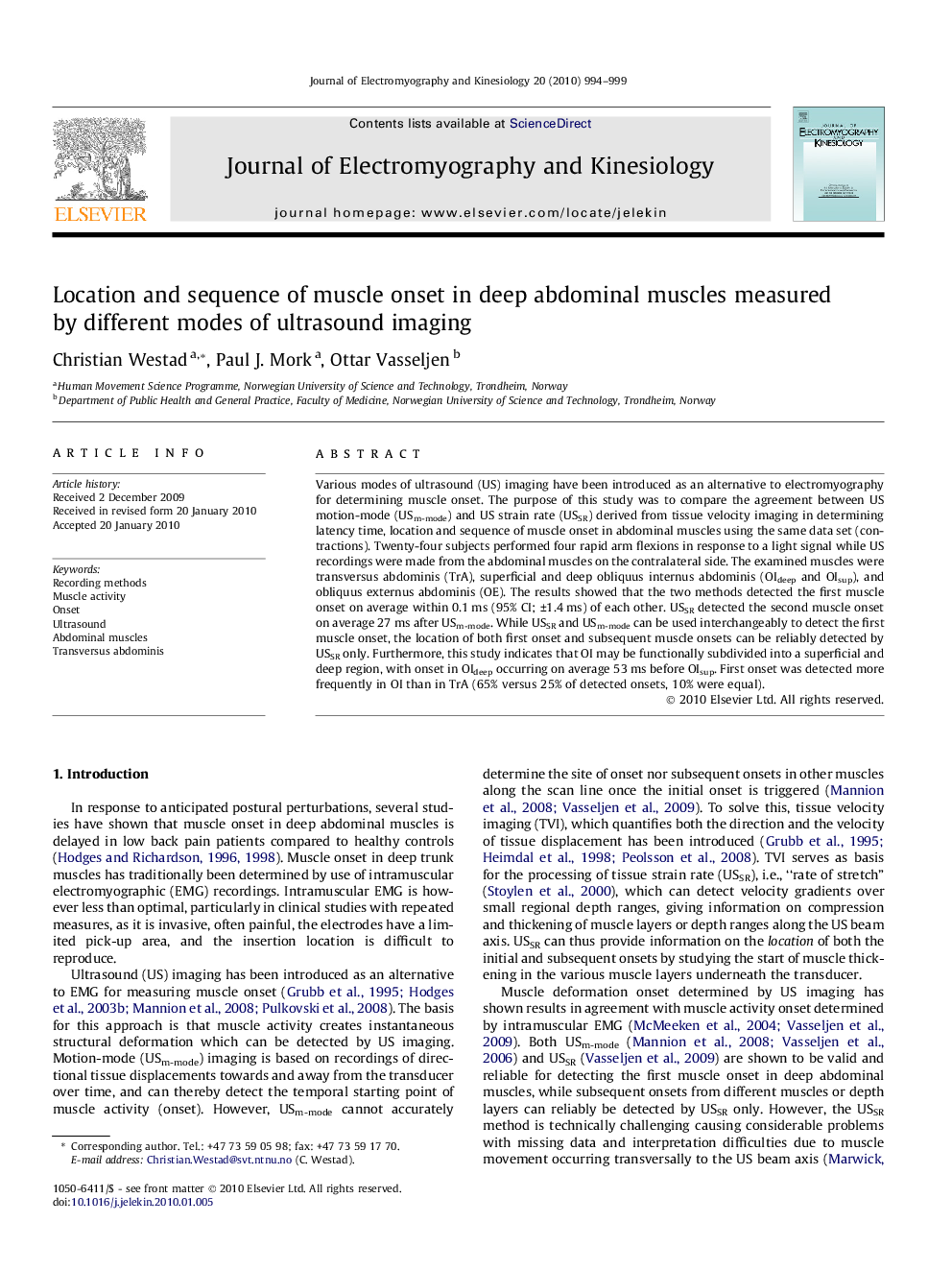| Article ID | Journal | Published Year | Pages | File Type |
|---|---|---|---|---|
| 4065145 | Journal of Electromyography and Kinesiology | 2010 | 6 Pages |
Various modes of ultrasound (US) imaging have been introduced as an alternative to electromyography for determining muscle onset. The purpose of this study was to compare the agreement between US motion-mode (USm-mode) and US strain rate (USSR) derived from tissue velocity imaging in determining latency time, location and sequence of muscle onset in abdominal muscles using the same data set (contractions). Twenty-four subjects performed four rapid arm flexions in response to a light signal while US recordings were made from the abdominal muscles on the contralateral side. The examined muscles were transversus abdominis (TrA), superficial and deep obliquus internus abdominis (OIdeep and OIsup), and obliquus externus abdominis (OE). The results showed that the two methods detected the first muscle onset on average within 0.1 ms (95% CI; ±1.4 ms) of each other. USSR detected the second muscle onset on average 27 ms after USm-mode. While USSR and USm-mode can be used interchangeably to detect the first muscle onset, the location of both first onset and subsequent muscle onsets can be reliably detected by USSR only. Furthermore, this study indicates that OI may be functionally subdivided into a superficial and deep region, with onset in OIdeep occurring on average 53 ms before OIsup. First onset was detected more frequently in OI than in TrA (65% versus 25% of detected onsets, 10% were equal).
